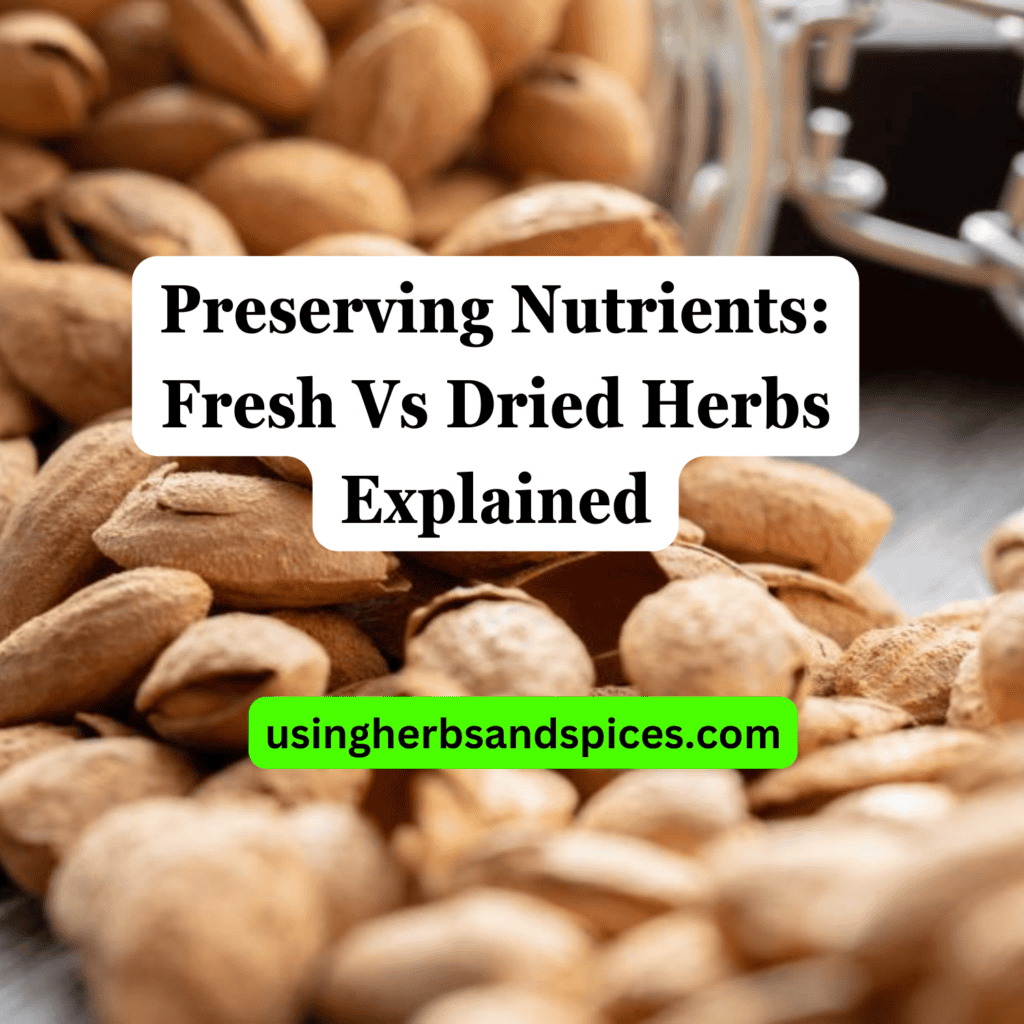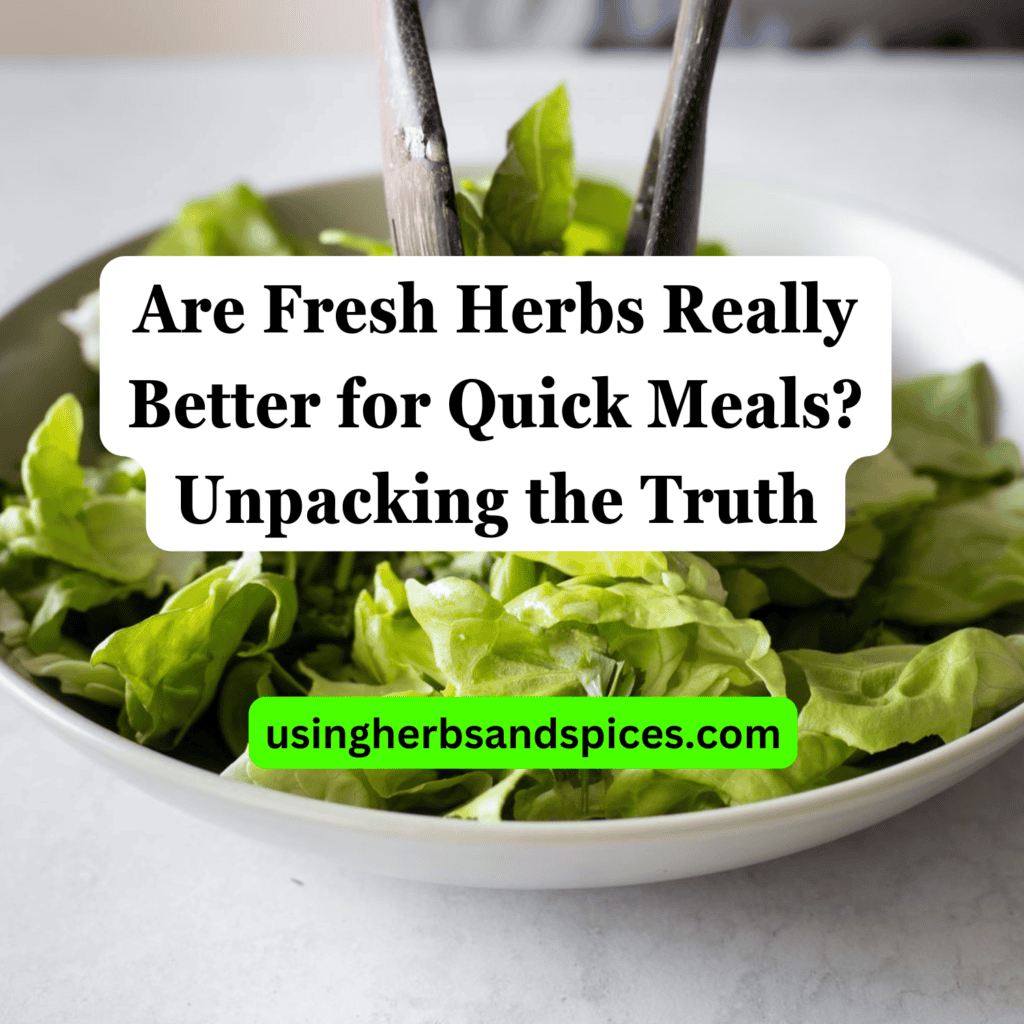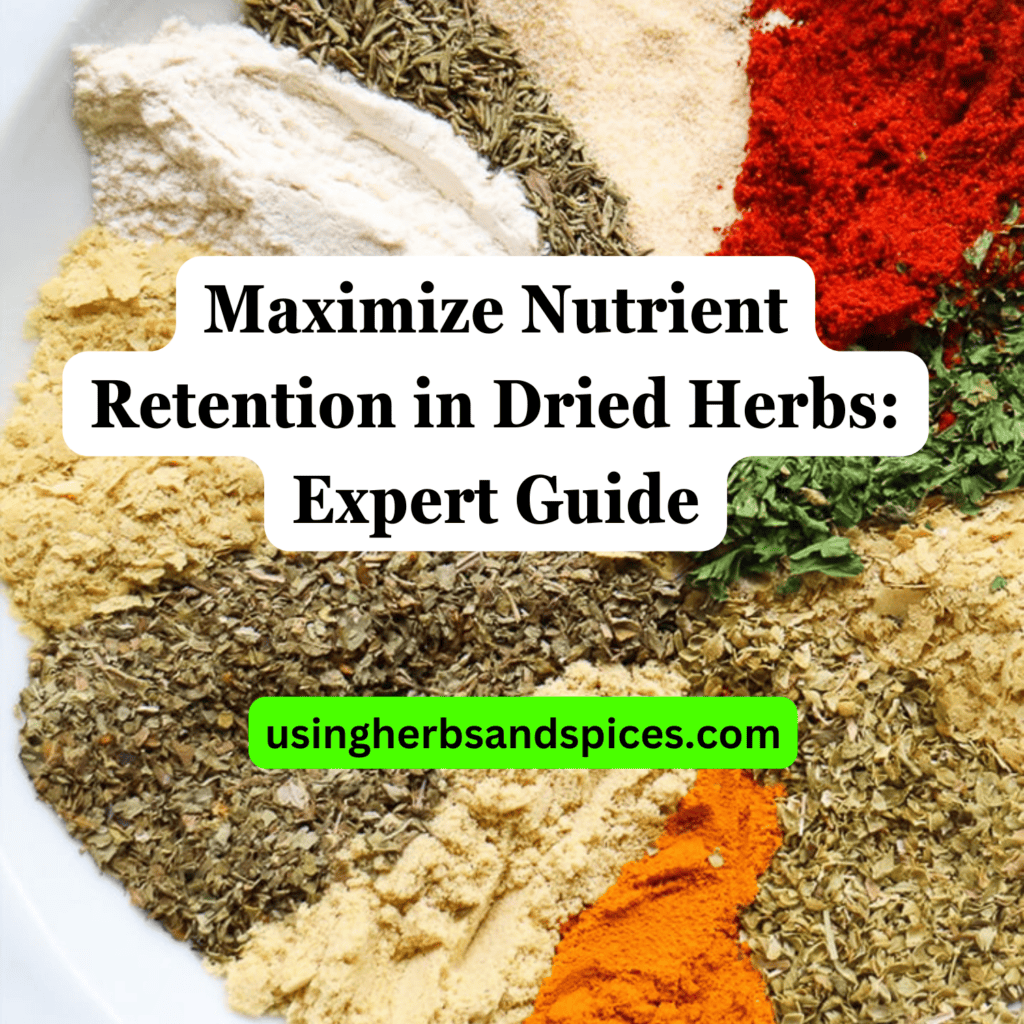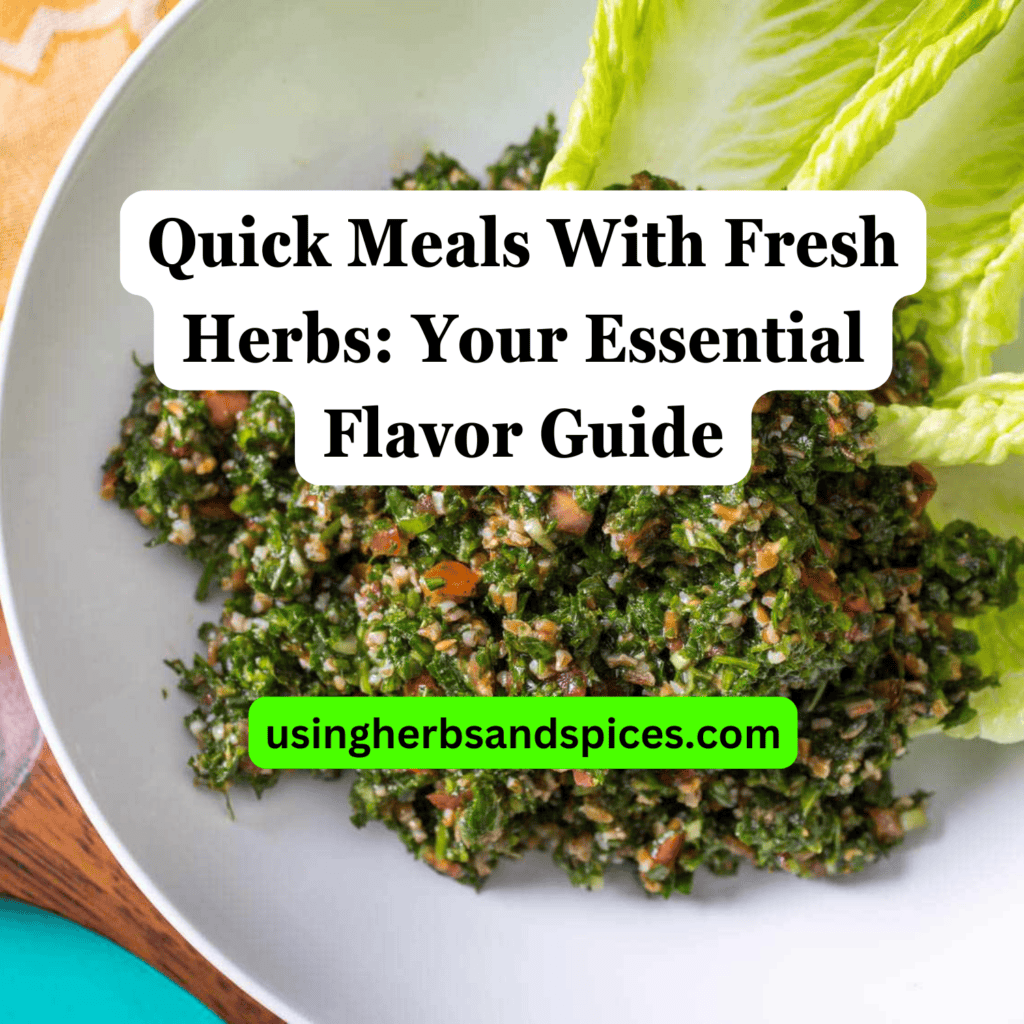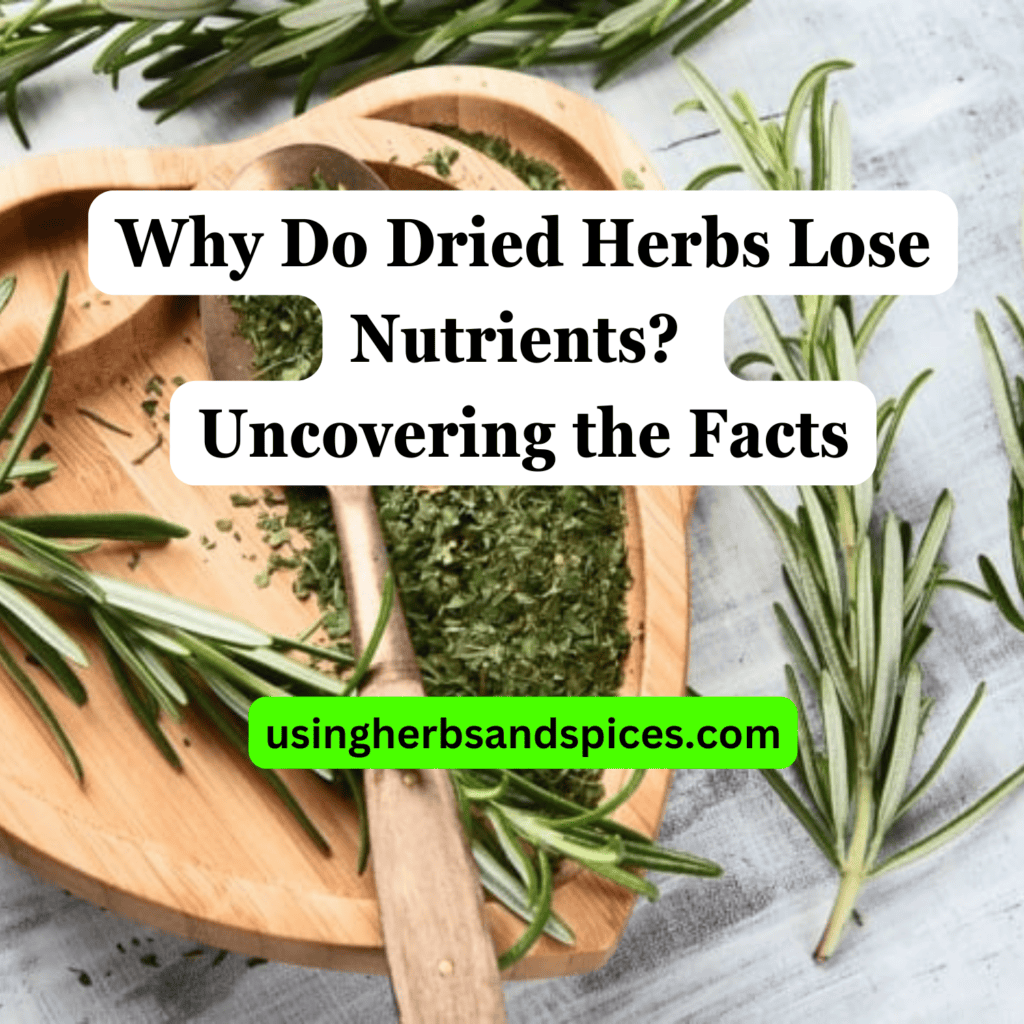SUMMARY: Fresh herbs transform quick meals into extraordinary dishes with vibrant flavors and easy-to-follow tips for growing and storing elevate your culinary game. Discover simple yet delicious recipes that showcase how herbs can make mealtime both fast and impressive.
Ever find yourself in a dinner rut, reaching for the same bland, quick-fix recipes?

Fresh herbs are the simple secret to transforming your meals from mundane to magnificent in minutes.
- The Importance of Fresh Herbs in Cooking
- Top Quick Meal Ideas Featuring Fresh Herbs
- Tips for Growing and Storing Fresh Herbs
- Pairing Herbs With Foods: A Guide
Continue reading to discover how fresh herbs can elevate your cooking effortlessly, allowing you to enjoy flavorful meals without the extra time or fuss.
The Importance of Fresh Herbs in Cooking
Incorporating fresh herbs into your cooking is more than a culinary trend; it’s a gateway to enhancing flavor, nutrition, and creativity in the kitchen. Unlike dried herbs, which can offer a concentrated aroma but lack freshness, fresh herbs provide a burst of flavor that can turn a simple dish into a symphony of taste. They contain essential oils that are released upon chopping or crushing, imparting depth and complexity to quick meals without additional calories or sodium.
But the benefits of fresh herbs extend beyond just taste. They are packed with antioxidants, vitamins, and minerals, contributing to overall health and wellness. For instance, adding fresh parsley to a dish not only gives it a vibrant color and peppery taste but also offers a good dose of Vitamin K, essential for bone health. Similarly, basil can enhance a tomato sauce while providing anti-inflammatory and antibacterial benefits.
Moreover, using fresh herbs invites you to explore culinary traditions from around the world, giving you the opportunity to experiment with flavors and techniques that can broaden your cooking repertoire. Whether it’s a sprinkle of cilantro on a taco, a handful of mint in a Thai salad, or some dill in a Scandinavian soup, fresh herbs bridge the gap between ordinary and extraordinary, making every meal an adventure.
Embracing fresh herbs is not just about adding flavor; it’s about transforming the way we cook and enjoy food, making every bite a celebration of freshness and health. Start exploring the power of fresh herbs, and witness how they can turn your quick meals into gourmet experiences.
Top Quick Meal Ideas Featuring Fresh Herbs
Introducing fresh herbs into your meals can transform even the most basic dishes into a culinary delight. Here are some quick meal ideas that make fresh herbs the star, providing both inspiration and practical ways to incorporate them into your daily cooking routine.
Herb-Infused Scrambled Eggs
Start your day with a burst of flavor by adding chopped chives, parsley, or basil to your scrambled eggs. These herbs infuse the eggs with a fresh, vibrant taste that makes for a quick, nutritious breakfast option.
Avocado Toast with Cilantro and Lime
Elevate your avocado toast by adding fresh cilantro and a squeeze of lime juice. This combination adds a zesty, fresh dimension to a popular favorite, showcasing how simple ingredients can create an extraordinary meal.
Lemon Basil Pasta
For a quick dinner option, toss cooked pasta with olive oil, fresh lemon juice, and plenty of chopped basil. The basil adds a fresh, floral note to the dish, while the lemon provides a bright acidity that balances the richness of the olive oil.
Minty Pea Soup
A vibrant, light option that is as easy as it is satisfying. Blend fresh peas with mint leaves, vegetable broth, and a touch of cream to achieve a beautifully smooth soup. The mint adds a refreshing twist to the sweet peas, creating a deliciously unique dish.
Cilantro Lime Chicken
Marinate chicken breasts in a mixture of lime juice, chopped cilantro, garlic, and a dash of olive oil for a flavorful, quick-cook meal. Grill or pan-fry the chicken for a juicy, herb-infused entree that pairs perfectly with rice or a green salad.
These ideas demonstrate the ease with which fresh herbs can be incorporated into everyday meals, instantly elevating them from the mundane to the extraordinary. With a little creativity and some fresh herbs, quick and delicious meals are always within reach.
Tips for Growing and Storing Fresh Herbs
Growing your own herbs is a rewarding journey that brings the freshest flavors right to your kitchen. Start with easy-to-grow herbs like basil, mint, and parsley, which require plenty of sunlight but minimal maintenance. Ensure they are planted in well-draining soil and keep them watered, but be careful not to overwater. Herbs thrive in both garden beds and containers, making them accessible for everyone, regardless of garden size.
When it comes to storing herbs, the key is to retain their freshness for as long as possible. For soft herbs (like cilantro and parsley), trim the stems and place them in a glass of water, covering loosely with a plastic bag before refrigerating. This method can keep them fresh for up to two weeks. For hard herbs (like rosemary and thyme), wrap them in a damp paper towel and store them in a plastic bag in the refrigerator. Alternatively, you can chop the herbs, place them in an ice cube tray with water, and freeze. This is especially useful for adding to soups or stews, as the herbs will release their flavors as they melt.
Pairing Herbs With Foods: A Guide
Mastering the art of pairing herbs with food can transform an ordinary meal into a culinary delight. Consider the flavor profile of the dish and choose herbs that complement or contrast appropriately. Here are some classic pairings to inspire your next meal:
- Basil pairs well with tomatoes, garlic, and mozzarella, making it a staple in Italian cuisine.
- Cilantro brings a fresh, citrusy dimension to Mexican and Asian dishes, especially those with lime and chili.
- Mint adds a cool, refreshing twist to salads, yogurts, and Middle Eastern dishes.
- Rosemary is robust and woody, perfect for roasting with meats and root vegetables.
- Thyme offers a subtle, earthy flavor ideal for soups, stews, and French cuisine.
To experiment with flavors, start with a smaller amount of herb and taste as you go. Remember, it’s easier to add more than to remedy a dish that’s overwhelmed by a particular herb. Happy pairing!
Elevate Meals with Fresh Herbs
In summary, the integration of fresh herbs into quick meal preparations not only enhances flavor but also elevates the nutritional value of everyday dishes.
- The significance of fresh herbs extends beyond mere taste, contributing to health benefits and culinary diversity.
- Quick and easy recipes that incorporate fresh herbs can transform simple meals into gourmet experiences without extensive prep time.
- Homegrown herbs and proper storage techniques ensure the highest degree of freshness, flavor, and health benefits.
- Understanding how to pair herbs with food can significantly enhance the flavor profiles of various dishes.
Fresh Flavors: Quick Meals With Herbs FAQs
How do I substitute dried herbs for fresh in a recipe?
To substitute dried herbs for fresh, the general rule is to use one-third the amount of dried herbs as fresh. This is due to the more concentrated flavor found in dried herbs. It’s important to remember that some herbs, like basil and parsley, lose a significant amount of flavor when dried, so adjustments to taste may be necessary.
Which herbs are easiest to grow at home?
Many herbs are quite forgiving and perfect for beginners, including basil, mint, parsley, and chives. These herbs require minimal maintenance. Providing them with sufficient sunlight, water, and regular pruning will often result in a bountiful harvest.
Can you freeze fresh herbs for later use?
Yes, freezing fresh herbs is an excellent way to preserve their flavor. It’s best to chop the herbs and freeze them in an ice cube tray covered with water or olive oil. Once frozen, transfer the cubes to a freezer bag. This method is especially useful for herbs like basil, cilantro, and parsley.

